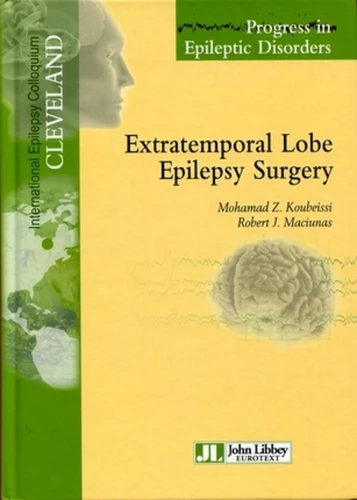Extratemporal Lobe Epilepsy Surgery. Volume 10.
Par : , ,Formats :
- Paiement en ligne :
- Livraison à domicile ou en point Mondial Relay indisponible
- Retrait Click and Collect en magasin gratuit
- Nombre de pages510
- PrésentationRelié
- Poids1.164 kg
- Dimensions17,6 cm × 24,7 cm × 3,1 cm
- ISBN978-2-7420-0772-1
- EAN9782742007721
- Date de parution22/09/2011
- CollectionProgress in Epileptic Disorder
- ÉditeurJohn Libbey
Résumé
The theme of the Cleveland colloquium which took place in May 2010 was extratemporal lobe epilepsy surgery. Patients with refractory extratemporal lobe epilepsy, particularly those in whom imaging examinations did not reveal any brain lesions, have a less positive prognosis after surgery than those with mesial temporal lobe epilepsy. The semiology of seizures, the functional imaging techniques, neuropsychological evaluation and intracranial EEG are used to select surgical patients.
Moreover, a large number of centres have experimented with new methods for identifying the epileptogenic area in these patients. This work outlines diagnostic and prognostic tools available as well as epilepsy surgery. Written by international experts who attended the Cleveland colloquium, it will be all the more useful to neurologists, neurosurgeons and epileptologists as no other work until now has focused on this subject.
Moreover, a large number of centres have experimented with new methods for identifying the epileptogenic area in these patients. This work outlines diagnostic and prognostic tools available as well as epilepsy surgery. Written by international experts who attended the Cleveland colloquium, it will be all the more useful to neurologists, neurosurgeons and epileptologists as no other work until now has focused on this subject.
The theme of the Cleveland colloquium which took place in May 2010 was extratemporal lobe epilepsy surgery. Patients with refractory extratemporal lobe epilepsy, particularly those in whom imaging examinations did not reveal any brain lesions, have a less positive prognosis after surgery than those with mesial temporal lobe epilepsy. The semiology of seizures, the functional imaging techniques, neuropsychological evaluation and intracranial EEG are used to select surgical patients.
Moreover, a large number of centres have experimented with new methods for identifying the epileptogenic area in these patients. This work outlines diagnostic and prognostic tools available as well as epilepsy surgery. Written by international experts who attended the Cleveland colloquium, it will be all the more useful to neurologists, neurosurgeons and epileptologists as no other work until now has focused on this subject.
Moreover, a large number of centres have experimented with new methods for identifying the epileptogenic area in these patients. This work outlines diagnostic and prognostic tools available as well as epilepsy surgery. Written by international experts who attended the Cleveland colloquium, it will be all the more useful to neurologists, neurosurgeons and epileptologists as no other work until now has focused on this subject.

